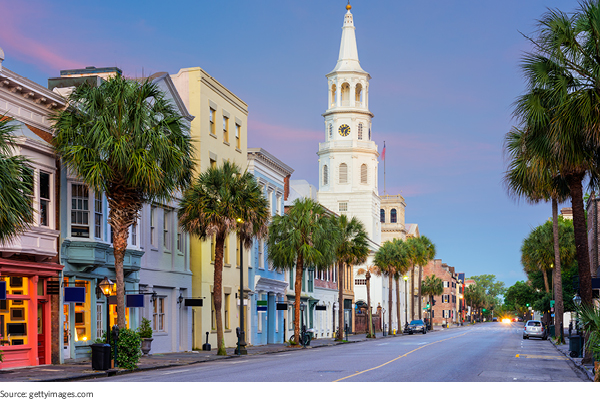Death and taxes are the only certainty in life—but those worrying about the uncertainty around the potentially large tax hike proposals before Congress this year may want to consider moving to a state that already offers lower tax rates.
The tax increases in President Joe Biden’s Bipartisan Infrastructure Framework and Build Back Better social spending plan will spare many Americans already living in low-tax areas the five-figure tax increases it will reportedly levy on others, according to the nonprofit Tax Foundation, a think tank devoted to tax issues.
Taxpayers in one of the least-hit states will actually see their taxes decline over the decade ending in 2031, according to the Tax Foundation analysis. In some of the other states, this annual tax increase will measure less than $200 per year by the end of the decade.
Broken down by congressional district, over 96% of districts across the U.S. would eventually see a tax increase. Across the next decade, the largest tax increases would be in high-income districts around cities like New York, Los Angeles and San Francisco, where the average individual tax burden could increase by approximately $10,000 per year by 2031, the tenth year of the study period.
To determine the additional tax burden caused by the Biden administration’s plans, the Tax Foundation used data from the IRS Statistics of Income for individual tax returns in 2018, which breaks down tax information by congressional district and adjusted gross income. The analysis then distributes the cost of tax increases by income and geography, including an estimate of the eventual burden of the president’s corporate tax increases on individual payers.
Here, in ascending order, are the 10 least-impacted states if current tax plans come to fruition, along with the total amount in increased taxes individuals will pay in each state over the 10 years studied:
10. Kentucky - $3,116
Kentucky starts out in 2022 with a $304 annual tax deccrease for the average tax payer, which becomes a $723 annual tax increase by 2031.

9. South Carolina - $2,814
South Carolina starts out in 2022 with a $290 annual tax decrease for the average tax payer, which becomes a $692 annual tax increase by 2031.

8. Maine - $2,370
Maine starts out in 2022 with a $73 annual tax decrease for the average tax payer, which becomes a $474 annual tax increase by 2031.

7. New Mexico - $2,332
New Mexico starts out in 2022 with a $403 annual tax decrease for the average tax payer, which becomes an annual tax increase of $666 by 2031.

6. North Carolina - $2,241
North Carolina starts out in 2022 with a $288 annual tax cut for the average tax payer, which becomes a $599 tax increase by 2031.

5. Nebraska - $2,216
Nebraska starts out in 2022 with a $220 annual tax decrease for the average tax payer, which becomes a $551 annual tax increase by 2031.

4. Oklahoma - $1,999
Oklahoma starts out in 2022 with a $424 annual tax cut for the average tax payer, which increases to a $641 annual tax hike by 2031.

3. West Virginia - $1,750
West Virginia starts out in 2022 with a $361 annual tax decrease for the average tax payer, which becomes a $522 annual tax increase by 2031.

2. Alabama - $1,233
Alabama starts out in 2022 with a $509 annual tax cut for the average tax payer, which increases to a $563 tax hike by 2031.

1. Mississippi - $1,761
Mississippians will actually pay less on average under the Biden tax proposals. The state starts out in 2022 with a $ annual tax increase for the average tax payer, which increases to $ by 2031.

The full report can be viewed here.








